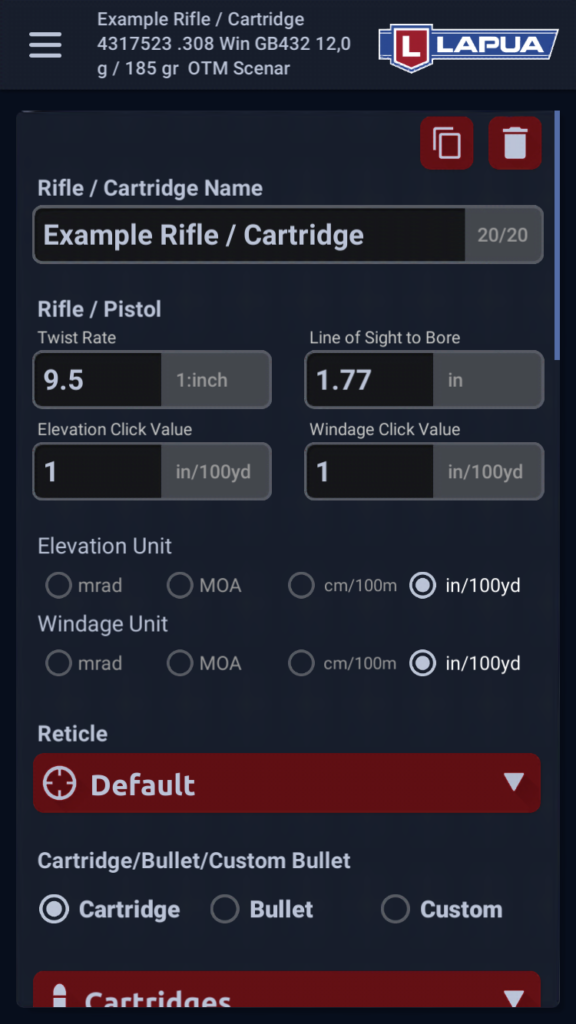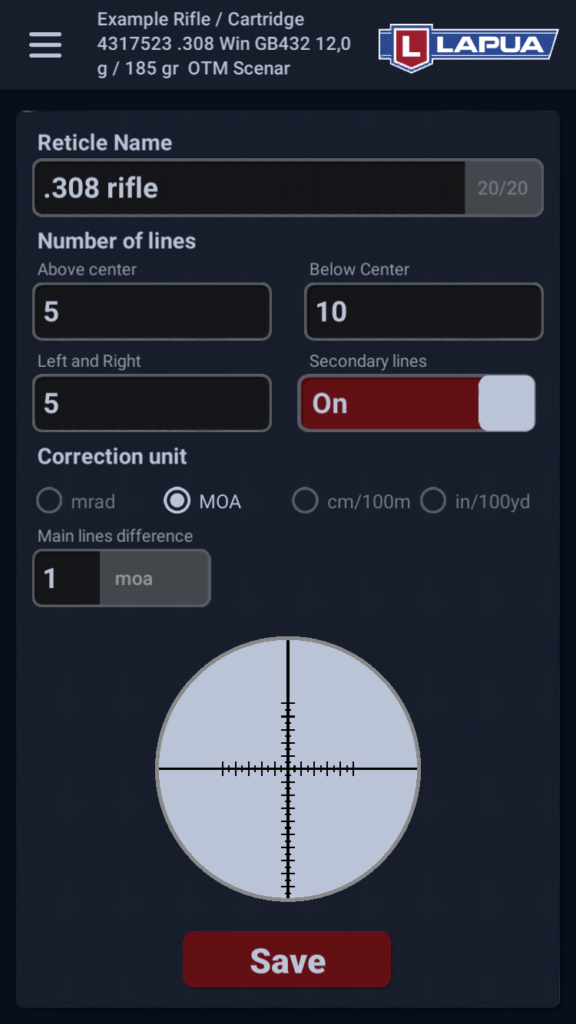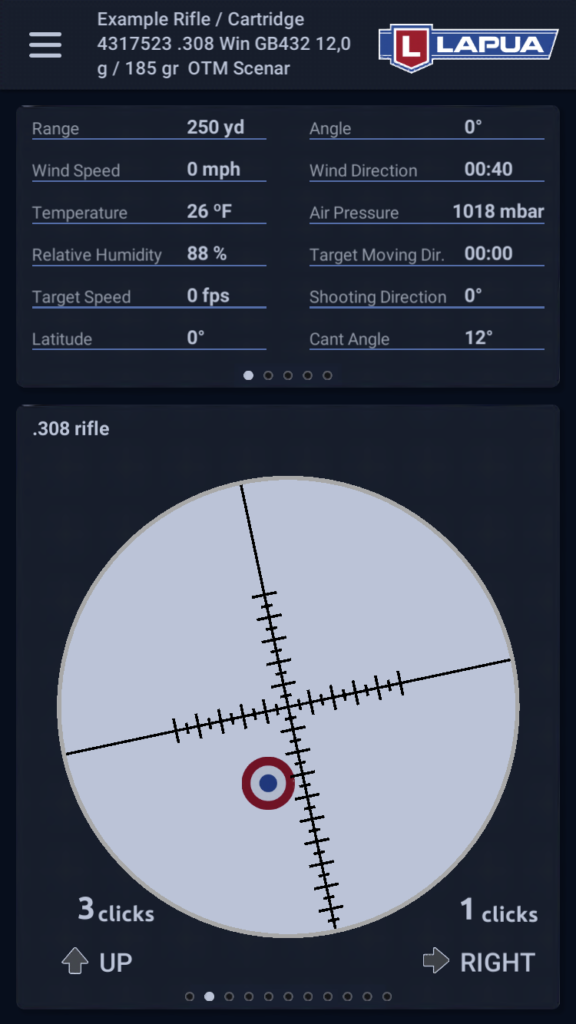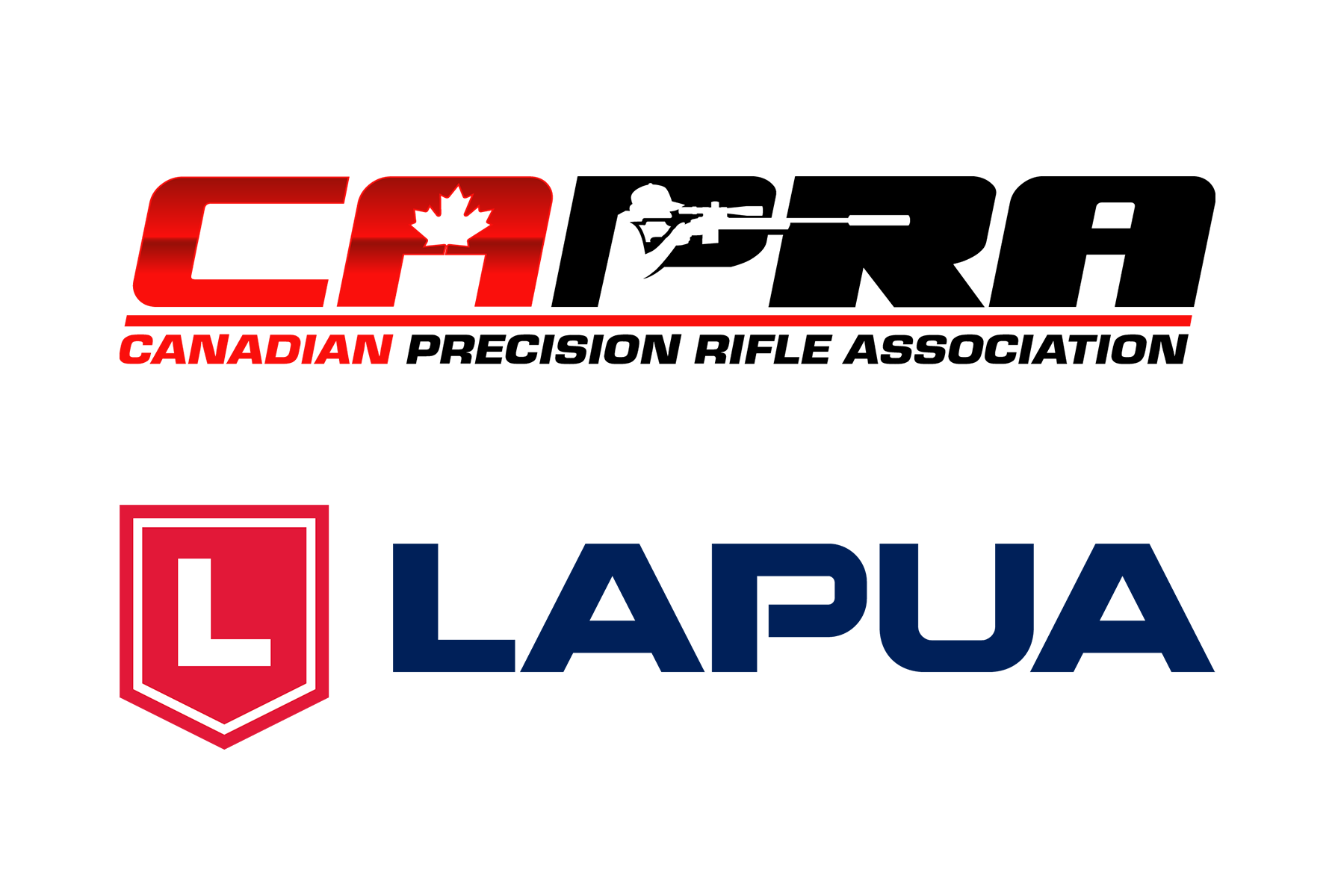(For the previous Lapua Ballistics tips, click here for the Lapua Ballistics Tips page)
How to create a scope reticle for your rifle in Lapua Ballistics
Did you know that you can create an image of your scope reticle in our ballistics calculator? You can set up your actual scope reticle dimensions in the calculator view to give you an easy visual guidance in the app. Creating the crosshair is an easy process, you just have to calculate the number of lines in your reticle and know the distance between the lines.
How to create your scope reticle in Lapua Ballistics
- Go to ”Manage Rifle cartridge data” and choose the desired rifle-ammunition-scope system by tapping the pen symbol
- Go to the Reticle menu and scroll to ”Create”
- Name your reticle
- Add the number of main lines for the three directions (above and below center; left and right)
- Choose the correction unit (mrad – MOA – cm/100m – in/100yd)
- Give the difference between main lines in the unit you selected
- If you have secondary lines between main lines, tap Secondary lines ‘On’. Your secondary lines will then be visible halfway between main lines.
- Remember to save the changes you’ve made. Done! Now your reticle is the one displayed in the calculator view.



If the distance between the lines in your actual scope is not a constant, then you won’t be able to generate a correct looking reticle view, but all the ballistic calculations will naturally be correct nevertheless.
You should note that the distance (in mrad, MOA etc.) between the lines may or may not be a constant with different magnification settings, depending the type of your scope.
What is the difference between a SFP reticle and a FFP reticle?
A riflescope’s reticle is placed on either the first focal plane (FFP) or the second focal plane (SFP). The main difference between them is that an SFP reticle will appear to be the same size regardless of magnification. With an FFP reticle, the size of the reticle will appear to change as the scope’s magnification is changed.
Most hunters and shooters are familiar with SFP, as it has been the most commonly used in basic scopes. The FFP reticle has become popular especially with long-range shooters.
With an SFP reticle, the spacing for holdover in the reticle is only correct at one magnification, usually the highest setting. One advantage with this is that you get a strong and easy-to-see reticle even at the lowest magnification.
An FFP reticle appears to grow larger or smaller as the scope’s magnification is increased or decreased, respectively. In reality, the reticle maintains the same perspective with the target size throughout the magnification range. That means the holdover points remain the same throughout the range of magnification. For example, the 5 MOA line is at 5 MOA for all magnification settings. The downside of an FFP reticle is it appears small and thin at low power and gets thicker at high power, so it can be hard to see at the lowest settings and can cover too much target at the highest setting.


